- Home
- Tennessee Williams
The Traveling Companion & Other Plays
The Traveling Companion & Other Plays Read online
THE TRAVELING COMPANION
AND OTHER PLAYS
The Chalky White Substance [1980]—Two haggard male figures meet at the edge of a vast canyon, overlooking a dried-out riverbed, in a future where the fallout from unnamed and uncountable nuclear wars continually floats through the air. It is the chalky white substance that covers the few inhabitants as they scramble in darkness and fear, fighting for the scarce, but indispensable, resources of water, food, shelter and human warmth. Mark and Luke have struggled in this apocalyptic world together, but the primal instinct for survival will lead to betrayal. “What a huge creature, what an immense beast [God] must have been to have left such enormous white bones when He died. . . . Endlessly long ago, the bones of Him now turned to powder that blows and blows about His broken—creation. . . .”
The Day on Which a Man Dies (an Occidental Noh play) [1960]—“Does life have room for death?” asks the Japanese narrator of this play about an American artist and his mistress ending their volatile relationship in a Japanese hotel. The artist (inspired by Jackson Pollock, whom Williams first met in the summer of 1940) is doomed, and how he takes his own life is viewed from both Eastern and Western points of view. Their story is told in scenes that include traditional techniques from Noh, Kabuki, and Gutai, and utilize elements of performance art, including—much ahead of its time in American theater—art created on stage with a spray gun. Williams dedicated this play to his friend, the writer Yukio Mishima.
A Cavalier for Milady [c. 1976]—One of several plays Williams’s designated as “for the lyric theater,” A Cavalier for Milady is a psychological and sexual fantasy in which two late-middle-aged women go off for an evening in New York City with male escorts from agencies such as “Companions for Madam” and “Cavaliers for Milady,” leaving behind an adult daughter in the care of a hostile “babysitter.” The adult daughter, Nance, who is dressed in the clothes of a Victorian child, quickly drives off the unhappy babysitter and spends the evening with a Greek statue that has “come to life” as an apparition of the great Russian dancer Vaslav Nijinsky. Free from the control of Diaghilev, the dance world, and demands of the flesh, Nijinksy’s apparition keeps Nance company, but cannot alleviate her loneliness or satisfy her desire which forced celibacy has made almost unbearable.
The Pronoun ‘I’ (a short work for the lyric theatre) [c. 1975]—A parody of classical forms and contemporary mores, this “short work for the lyric theatre” concerns the reign of haggard old “Mad Queen May” of England—disguised behind a mask, the hag is actually the young and beautiful “Fair Queen May.” Her narcissistic and nearly naked young lover, the poet Dominique, can only begin his terrible poems with the pronoun ‘I.’ Queen May can only watch as revolt and anarchy bring her reign to an end, but she is energized by the arrival of a “Handsome Young Revolutionary” who steals into the castle to murder her. A campy frolic with touches of absurdity, The Pronoun ‘I’ ends with a mob scene and a lover’s embrace.
The Remarkable Rooming-House of Mme Le Monde [1982]—In the attic of a rooming-house in London (a “rectangle with hooks”) lives Mint. Unable to use his legs, Mint is forced to grab onto giant hooks which hang from the ceiling, and swing from hook to hook to get around; he is sexually abused on a regular basis by one of Mme. Le Monde’s many male “children”; he is taunted with food that is withheld by his landlady or doled out in stingy amounts; and on this day he is visited by an old friend, Hall, from their private childhood boarding school, Scrotom-on-Swansea, who shows no interest in relieving Mint’s suffering. The play is filled with images that resonate from the work of Beckett and Genet; then with the arrival of Mme. Le Monde herself—“a large and rather globular woman with a fiery red mop of hair that suggests a nuclear explosion, as does her voice”—Williams’s sinister vision of cruelty gets only darker.
Kirche, Küche, Kinder (An Outrage for the Stage) [1979]—Three giant turning screens in primary colors allow the stage to become the Kirche (church) or the Küche (kitchen) while the gigantic “daisy of daytime” and “moon-vines” mark the hour. Miss Rose, an organist; the First Lutheran Minister of the Island of Staten, known as “Papa;” the ninety-year-old and pregnant Fräulein Haussmitzenschlogger; the adult “Kinder” lewdly dressed as children; and “The Man” (a blond young hustler in leather pants, and self-proclaimed descendant of “the old kings of Ireland”) populate this bizarre and bawdy play written in the style of the theater of the ridiculous. With its vaudevillian humor, cartoon sets and characters, ribald takes on religion and marriage, and sentimental Irish ballads, this is one of Williams’s more chaotic mixtures of the comic and the dreadful—slapstick and brutality are interwoven to create a breakthrough piece of performance art.
Green Eyes, or No Sight Would Be Worth Seeing [1970]—A young couple are spending their honeymoon in a hotel in New Orleans’ French Quarter when they wake up one morning to find the “girl’s” body covered with mysterious bruises. The “boy,” on a short leave from serving in Vietnam, is enraged and blinded with jealously. As they fight—over her evasiveness, his courage or cowardice in war, their fears and expectations for a life together—it becomes clear that the bruises are no mystery at all. Reminiscent of Talk to Me Like the Rain and Let Me Listen and 27 Wagons Full of Cotton, Green Eyes raises the stakes much higher. In his most candid and intense exploration of sexual extremes, Williams builds anger and fear to a communion of total emotional exposure.
The Parade, or Approaching the End of a Summer [1962]—“Love makes some people charming but it makes me dull.” In the summer of 1940 Williams lived in Provincetown, Mass., where he fell in love for the first time—the man was Kip Kiernan, a dancer and Canadian draft dodger. Their affair lasted most of the summer, until Kip broke it off and left with a woman. Williams immediately drafted The Parade, which he finished in the 1960s. This play, which is related to the full-length Something Cloudy, Something Clear, not only presents a completely unguarded story about gay men, but also a portrait of passions unrequited and passions denied, that reveals the depth of compassion which can be found in friendship. “Williams’s words poignantly call forth the passion, and heartbreak of a long-lost summer.” —Cape Cod Times
The One Exception [1983] —An artist named Kyra has had a complete emotional breakdown from which she shows barely any signs of recovery. Now taken care of by a friendly nurse, Kyra’s greatest terror is to be sent to a mental institution. Just days before she is to be committed, Kyra is visited by Viola, an old friend from the art world who has come looking for a loan. Viola offers only “hilarious” updates and gossip about the successes of all the people who abandoned Kyra to her madness, those who left her alone and now judge her the only one from their group to be a failure—the one exception. “The One Exception betrays the playwright’s desperation in his old age, a terrible fear of loneliness and the cruel isolation of despair.” —Bruce Weber, The New York Times
Sunburst [c. 1980]—Miss Sylvia Sails, a famed actress of the American stage who long, long ago chose retirement at the peak of her career (“not willing to decline from it”) is awakened at 3:00 in the morning by Giuseppe, a handsome and felonious night clerk at her live-in hotel. It becomes clear soon enough that Giuseppe is after Miss Sails’ extremely valuable sunburst diamond ring, but Miss Sails’ knuckle is so swollen that the diamond ring cannot be removed from her finger unless her finger is removed from her hand. Held hostage, Miss Sails resists her captors, Giuseppe and his boyfriend Luigi, by reciting Shakespeare, by drinking with them, and most of all by endurance, outlasting them until daybreak when help arrives and the sun finally comes up.
Will Mr. M
erriwether Return from Memphis? [1969]—Women are waiting for their lovers to return, widows are longing for their husbands who will never return, and young ladies are just discovering the fires of early love—sounds almost like a parody of a Tennessee Williams play, and in a strange way it is. With ragtime cakewalk dancers, séances and ghosts, hags called “the Eumenides” who weave the fate of the characters, a “Romantically Handsome Youth,” a gay French instructor, a banjo player in every scene, and the triumph of love found, love returned, and love forgiven, Williams wrote a comedy as full of poetry as of pleasure. “Pensive and muted, a violin to Camino Real’s trumpet, Mr. Merriwether laces together reality and fantasy, the romantic spirit and the appearance of actual cultural heroes of the past, such as Van Gogh and Rimbaud.” —Time Magazine
The Traveling Companion [1981]—It not incidental that Williams was seventy when he wrote a short play about the relationship between a younger and an older man—an inexperienced hustler full of sexual potency named Beau, and an older, insecure writer named Vieux. Emotional and personal compromise can be assumed in a relationship in which one person is a paid “assistant,” “secretary,” or “companion,” but here the questions of who is being used or who is using are not so simply decided. With an underlying wit, Williams reveals the common needs that keep traveling companions together. “The Traveling Companion offers subtle humor and the affecting story of two people demanding something concrete from each other, along with something more elusive.” —David Cuthbert, The Times-Picayune
Jeremy Lawrence as Mark and Ben Greissmeyer as Luke in The Chalky White Substance, directed by David Kaplan at the Tennessee Williams/New Orleans Literary Festival. Photograph courtesy of Earl Perry.
CONTENTS
Introduction
Acknowledgments
The Chalky White Substance
The Day on Which a Man Dies
A Cavalier for Milady
The Pronoun ‘I’
The Remarkable Rooming-House of Mme. Le Monde
Kirche, Küche, Kinder
Green Eyes
The Parade
The One Exception
Sunburst
Will Mr. Merriwether Return From Memphis?
The Traveling Companion
Sources and Notes on the Text
Copyright
INTRODUCTION:
TRANSMUTING MADNESS
INTO MEANING
“A new, plastic theatre . . . must take the place of the exhausted theatre of realistic conventions if the theatre is to resume vitality as a part of our culture.”
—Tennessee Williams, Production Notes to
The Glass Menagerie (1945)
“Man: I’m working with absolute freedom for the first time.”
—Tennessee Williams,
The Day on Which a Man Dies (1960)
“The future accepts more readily what the present rejects.”
—Tennessee Williams, 1963
In a 1979 interview, Tennessee Williams condemned the use of violence as a means of political resistance, prompting his interviewer to remind us that Williams’s form of social protest had always been peaceful, using art to resist injustice, challenge the status quo, and promote understanding. In this way, he concluded, Williams’s “life effort” has been “transmuting madness into meaning.” Williams’s vision of “madness”—this chaos of life that surrounds us—and its expression into artistic forms evolved from his earlier plays of the 1940s and ’50s—The Glass Menagerie (1945), A Streetcar Named Desire (1947), Summer and Smoke (1948), Cat on a Hot Tin Roof (1955), Suddenly Last Summer (1958), and Sweet Bird of Youth (1959), for example—to what he called in 1972 “freer” forms that “fit people and societies going a bit mad,” the forms that would dominate his work of the 1960s, ’70s, and ’80s. While Williams expressed his dissatisfaction with dramatic realism as early as 1945, introducing anti-realistic dramatic conventions into much of his early work, it is with the later plays presented in this volume that he finally achieved the “new, plastic theatre which must take the place of the exhausted theatre of realistic conventions” that he called for in his Production Notes to The Glass Menagerie.
Williams’s later plays responded to the changing social climate of the 1960s and ’70s, as well as to his own personal growth and artistic development. During the 1960s, Williams claimed to be moving deliberately away from what the critical establishment saw as the essentially realistic dramatic forms that dominated his early career to a more anti-realistic, fragmented, and playful type of drama characteristic of new theater movements of the time. The critics, however, failed to evaluate these works on their own terms and often dismissed them altogether. They did so either because they didn’t expect this sort of avant-garde style from Tennessee Williams, because they didn’t fully understand the plays and weren’t willing to look at them through a different lens, or because of personal biases. Williams insisted that the deliberate changes in style and presentation since his early plays disturbed the majority of critics, and that their nostalgia for plays such as The Glass Menagerie prevented them from accepting his later experiments with language and dramatic form. He was so prolific during these later years that not every play he wrote was completely successful. But most of these plays represent conscious and successful departures from his earlier work, and deserve a central place in American experimental drama.
Between 1945 and 1961 Williams had a total of eleven plays produced on Broadway, and virtually all were successful with critics and audiences, winning major awards—Pulitzer Prizes for A Streetcar Named Desire and Cat on a Hot Tin Roof, as well as four Drama Critics Circle Awards, a Tony Award, and dozens of other accolades and prize nominations. Commercially successful Hollywood films were made of almost all of Williams’s plays from the same period, starring major names such as Elizabeth Taylor, Marlon Brando, Vivian Leigh, Katharine Hepburn, Montgomery Clift, Paul Newman, and Geraldine Page. After The Night of the Iguana in 1961, however, no Williams play was to win any major award or experience any significant measure of critical success or popular acclaim. Yet he kept writing diligently every morning, no matter where he was, often getting up as early as 5 A.M., and continued to oversee productions of new plays until his death in 1983. These plays opened primarily off-Broadway or regionally, and in a 1975 interview Williams told Charles Ruas that his “great happiness in the theatre” was now “off-Broadway and off-off-Broadway.”
Most of Williams’s later plays have been published by New Directions, and a partial list of them suggests how prolific he was after 1961: The Milk Train Doesn’t Stop Here Anymore (1963), The Gnädiges Fräulein (1966), I Can’t Imagine Tomorrow (1966), Kingdom of Earth (1968), The Two-Character Play (Out Cry) (1973), In the Bar of a Tokyo Hotel (1969), Small Craft Warnings (1972), The Red Devil Battery Sign (1975), Vieux Carré (1977), A Lovely Sunday for Creve Coeur (1978), Clothes for a Summer Hotel (1980), The Notebook of Trigorin (1980), Something Cloudy, Something Clear (1981), and A House Not Meant to Stand (1982). The two films that were made of Williams’s later plays—The Last of the Mobile Hot Shots (1970), a version of Kingdom of Earth with Lynn Redgrave and James Coburn, and Boom! (1968), a version of The Milk Train Doesn’t Stop Here Anymore starring Elizabeth Taylor and Richard Burton—were not successful, yet John Waters, always a connoisseur of the outrageous, has asserted that he loves Boom!, calling it “The Best Failed Art Film Ever.” Legend has it that Joseph Losey used to brag that he was the first director to ever lose money with Taylor and Burton.
The twelve late plays included in this volume are available here for the first time in a definitive edition. Manuscripts of these plays exist as multiple drafts in archives at The Harry Ransom Humanities Research Center at the University of Texas at Austin, The Harvard Theatre Collection, The New Orleans Historic Collection, The Department of Special Collections at the University Research Library at the University of California, Los Angeles,
Columbia University Library, and in the private papers of Williams’s friends, agents, publisher, and former secretaries. Most of these plays have never before been published, have received only limited productions, are just now being produced, or have never been produced at all.
While the plays that Williams was writing during the 1960s, ’70s, and ’80s retained many of his earlier concerns with the ravages of time, the predatory nature of human beings, and the inevitable struggle to survive and endure, these late works express these concerns in a much more direct and brutal manner. The subtlety of symbolism and metaphor in the early plays is replaced with an irreverent representation of the human tragicomedy (to use Samuel Beckett’s term), as a new social permissiveness allowed Williams to turn to a sense of the outrageous, the “camp,” and the extreme in dealing with intersections of the personal and the political. The outrageous comic elements in several of the late plays, such as Kirche, Küche, Kinder or The Remarkable Rooming-House of Mme. Le Monde, for example, are countered with a sense of the brutality of human nature stripped of cultural artifice, reminiscent of the work that was being done in France by Antonin Artaud and Jean Genet from the 1930s to the 1960s.
Artaud’s theories can best be seen in practice in the plays of Jean Genet who, although he had read little of Artaud’s work, shared his goals for a primarily ritualistic theater that focused on accessing pre-logical consciousness and primitive existence through the symbolic, where action is separated from function. Both writers sought to invert the conventional moral code of good and evil, and, therefore, what was deemed “good” in traditional society (culture, repression, self-control, obedience to the law) became universally evil, and what was considered “evil” (nature, sexuality, violence, power) was encouraged as good. Like Nietzsche, both Artaud and Genet wanted characters to be judged outside of good and evil, and Artaud’s “theater of cruelty” (outlined in his 1938 treatise, The Theatre and Its Double, translated into English in 1958) forces the spectator to confront the harsh facts of a cruel world and his or her own isolation. These writers explored the contradictions and hypocrisies of bourgeois society and often championed the “primitive” impulses of the socially marginalized.

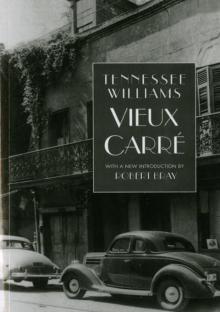 Vieux Carre
Vieux Carre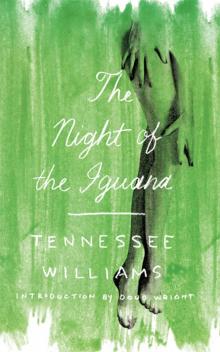 The Night of the Iguana
The Night of the Iguana A Lovely Sunday for Creve Coeur
A Lovely Sunday for Creve Coeur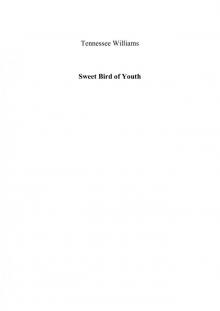 Sweet Bird of Youth
Sweet Bird of Youth Streetcar Named Desire
Streetcar Named Desire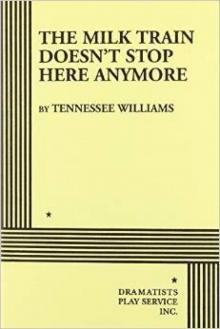 The Milk Train Doesn't Stop Here Anymore
The Milk Train Doesn't Stop Here Anymore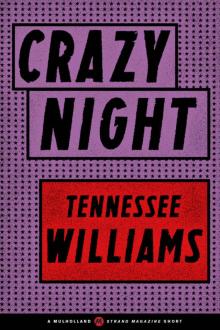 Crazy Night
Crazy Night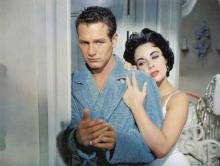 Three Plays of Tennessee Williams
Three Plays of Tennessee Williams A House Not Meant to Stand
A House Not Meant to Stand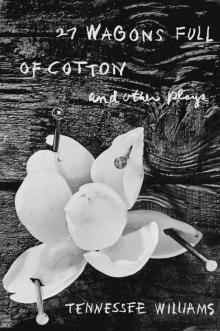 27 Wagons Full of Cotton and Other Plays
27 Wagons Full of Cotton and Other Plays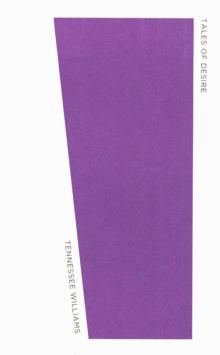 Tales of Desire
Tales of Desire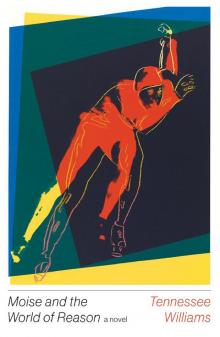 Moise and the World of Reason
Moise and the World of Reason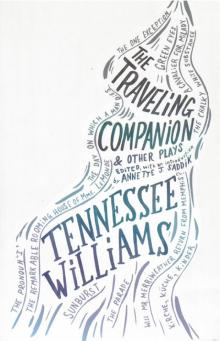 The Traveling Companion & Other Plays
The Traveling Companion & Other Plays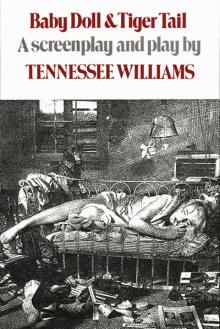 Baby Doll Tiger Tail: A Screenplay and Play by Tennessee Williams
Baby Doll Tiger Tail: A Screenplay and Play by Tennessee Williams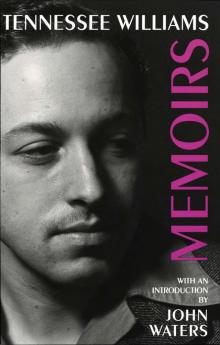 Memoirs
Memoirs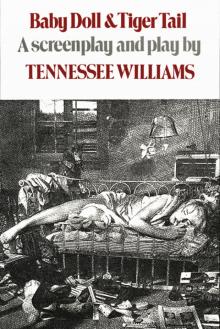 Baby Doll & Tiger Tail
Baby Doll & Tiger Tail Crazy Night (A Mulholland / Strand Magazine Short)
Crazy Night (A Mulholland / Strand Magazine Short)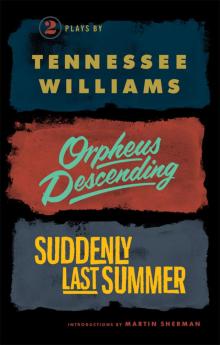 Orpheus Descending and Suddenly Last Summer
Orpheus Descending and Suddenly Last Summer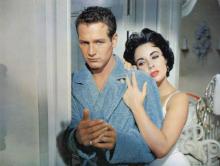 Three Plays
Three Plays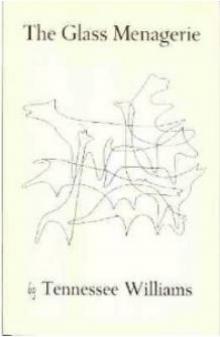 The Glass Menagerie
The Glass Menagerie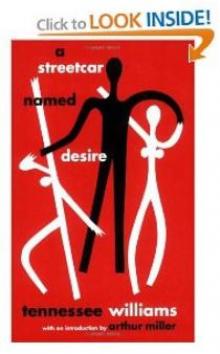 A Streetcar Named Desire
A Streetcar Named Desire